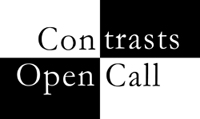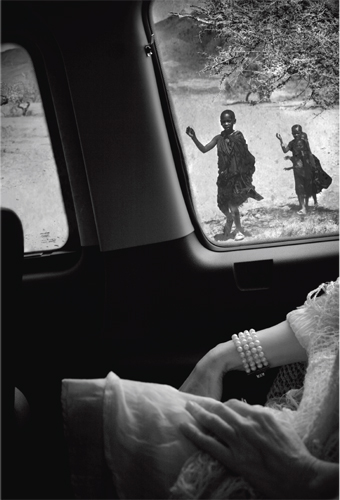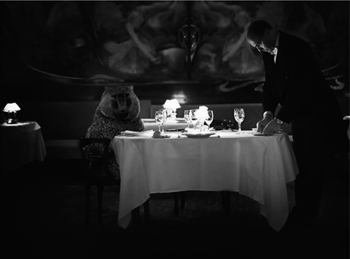Tag Archives: Ruth Fremson
30 By 30: Ruth Fremson / Strength from the Many
30 Women Photographers and the Women Photographers Who Inspired Them
A Blog Series in Honor of Women’s History Month, March 1 – 31
Ruth Fremson is a photographer for The New York Times, where she is also a frequent contributor to LENS Blog. She was part of the Associated Press team that won the 1999 Pulitzer Prize for feature photography for coverage of the Clinton impeachment, and her photographs of 9/11 and Afghanistan helped The New York Times win Pulitzer Prizes for breaking news photography and feature photography in 2002.
In an interview with The Digital Journalist, Fremson said: “it’s documenting history.…that’s why we do this….We don’t do this to go out and win awards.€
Fremson has gone and seen and photographed so that we can see ourselves. Without the filter of language and telling, by showing, she has put a human face on conflict and history.

A Pakistani man sets himself on fire accidentally as he tries to light an American flag on fire during an anti-American protest 2001 ©Ruth Fremson/The New York Times
Which woman photographer inspired you most?
RF: I can’t single out one female photographer who influenced me. So many have had a part in shaping me as a photojournalist. I entered the photojournalism world as an intern at The Washington Times in 1988. At the time, there were many talented, successful female photographers working in Washington, D.C. who embraced me and made me a part of their community. I was in awe of the intimidating elegance of Time Magazine’s Diana Walker, the humanity captured by The Washington Post’s Carol Guzy and Dayna Smith, the steadfastness of Time Magazine’s Cynthia Johnson, the grace of The Washington Post’s Susan Biddle, the tenaciousness of AP’s Marcy Nighswander, the professionalism of White House photographer, Barbara Kinney, the gregariousness of White House photographer, Sharon Farmer, the beauty of National Geographic’s Annie Griffiths Belt’s images. They all had a part in shaping me as a photojournalist, as did other photographers who I never met: Mary Ellen Mark, whose early work in India to the present continues to inspire me for its unique vision, Cindy Sherman who put the exclamation point on being female, Margaret Bourke-White who covered an astonishing range during her career, April Saul who taught me “don’t look at the sunset, look at the reflection,” and Anja Neidringhaus, an AP photographer currently based in Europe, who, despite not being as common a name as she should be, continues to rival anyone for guts, bravery and bringing the difficult and dangerous stories like the Libya uprising and the war in Afghanistan, home. I also need to mention Vicki Goldberg’s amazing writing about photography, which enhances my understanding of our medium and its contributors.
Many people take owning a camera for granted. They have them on their phones; they can take pictures anywhere, anytime. How, in areas of the world where cameras are not commonplace and women are not typically empowered, do cameras and photography help them understand and interact with the world on a personal and political level?
RF: In areas where cameras are not commonplace (an increasingly shrinking place) cameras and photography have the secondary effect of bringing services and aid. I think of nomadic women I photographed women in a feeding center in rural, central, remote India. These women are illiterate and their children chronically malnourished. The same goes for women in rural Chad, where I photographed women in a birthing center. In both of these areas women do not have access to cameras or photography. Rather, their lives consist of literally making it to the next day. When photography comes to them, because a journalist is interested in their lives, their plight is illuminated when that work is seen by a larger audience. When that increased awareness and modicum of understanding is achieved, assistance and resources may follow.
Unfortunately, the opposite can happen as well. In Haiti, which I traveled to periodically from 1994 until most recently in 2010, people have become cynical about photography. Many will demand money in exchange for being photographed. The gentler ones will harshly tell you that journalists have been photographing them for decades and yet nothing has changed their poverty or the corruption in their country.
How does photography change people-by the pictures they take, by the pictures they see?
RF: I believe it was Dorothea Lange who said “a photographer is someone who teaches people how to see without a camera.€ Photography, by preserving a random pixel of life, keeps moments, people, and history present, alive and relevant. We are the sum of our experiences so, while I may not think about every person or event I have photographed, I always carry a little bit of each with me. All of it adds up to a deeper understanding of human nature and the world we reside in. It is who I am.

An Iraqi woman grieves for her husband as she finds him dead as they reach the hospital where she rushed him after he was caught in crossfire on the day Saddam fell in Iraq ©Ruth Fremson/The New York Times

An Iraqi woman searches through dug up remains from a mass grave to find a lost relative in Iraq, 2003 ©Ruth Fremson/The New York Times
_____________________________
Editor’s Note: I’ve been busy putting this blog series together, so when I asked the question “How do pictures change us?” it was just a question. Then I saw these pictures and knew the answer was in them; no words were necessary. Photographs do have the power to change hearts and minds. These changed mine.
- Catherine Kirkpatrick, Archive Director
______________________________
30 By 30 blog series:
Intro: Dianora Niccolini / Women of Vision
Lauren Fleishman / Nan Goldin
Darleen Rubin / Louise Dahl-Wolfe
Dannielle Hayes / Diane Arbus
Meryl Meisler / Via Wynroth
Shana Schnur / Louise Dahl-Wolfe
Claudia Kunin / Imogen Cunningham
Gigi Stoll / Flo Fox
Robbie Kaye / Abi Hodes
Alice Sachs Zimet / Lisette Model
Juliana Sohn / Sally Mann
Susan May Tell / Lilo Raymond
Nora Kobrenik / Cindy Sherman
Caroline Coon / Ida Kar
Lisa Kahane / Jill Freedman
Karen Smul / Dorothea Lange
Claudia Sohrens / Martha Rosler
Laine Wyatt / Diane Arbus
Ruth Fremson / Strength From the Many
Greer Muldowney / Lee Miller
Rachel Barrett / Vera Lutter
Aline Smithson / Brigitte Lacombe
Ann George / Josephine Sacabo
Judi Bommarito / Mary Ellen Mark
Kay Kenny / Judy Dater
Editta Sherman / The Natural
Patt Blue / Ruth Orkin
Vicki Goldberg / Margaret Bourke-White
Beth Schiffer / Carrie Mae Weems
Anonymous / Her Mother
Ann George: PWP “Contrasts” Open Call Winner
Ann George lives in a small town in Louisiana with her husband and four sons. She created three images specifically for the CONTRASTS call for entry because she saw the competition as an opportunity to concentrate on one theme, decide what she wanted to say about it and how she wanted to say it. Her focus and determination in life, as well as photography, are truly inspirational.
This spring Terry Berenson, Senior Editor of Imprints, spoke with her about her work.
TB: Tell me about your Best in Show image, “Indifference.€
AG: Contrasts is such a great theme because it can be taken in so many different directions. I decided I would create three different genres, one serious and thought-provoking, one more light hearted and tongue-in-cheek, and one with no “message€, that just speaks to tonality and density.
Indifference is a composite I created to express a memory from a trip my family took to Africa several years ago. We were in the back seat of a big Range Rover, driving through a Masai area, when these young boys ran after us. I was struck by the contrast in our lives. These children lived in huts made of mud and dung and have absolutely nothing material, yet they were happy. I thought about God’s world, those boys and my sons for a long time after the trip. But I wanted the image to convey how so many people drive by others living in poverty and completely ignore them.
TB: Looking at the images you submitted to CONTRASTS, and then visiting your website, I can’t believe you have only worked in photography full-time for the last two years. What did you do before?
AG: My degree is in nursing and I was an ICU RN for many years, after which I built a hospital business that treated long-term critically ill people. I was very lucky to be successful while fulfilling my passion for helping others.
TB: That doesn’t sound like the typical path for a photographer. When did your love of photography blossom?
AG: I became ill myself and had let go of my business. It was a very painful time in my life, physically and emotionally. My faith and my family got me through it, and I’ve loved photography since childhood, so I turned to it again. I didn’t take it seriously at first, just took some workshops and enjoyed the camaraderie of other people and making friends with others who liked doing the same things I did.
As a little girl, I went around with my Kodak instamatic, taking pictures of everything from animals and plants to my parents’ back porch barbeques and fish fries. I can still hear the cicada and smell the hot Louisiana nights from those days, and I always hope my photographs evoke qualities of my southern roots.
Some years ago, I walked into a gallery in New Orleans and I saw a photograph by Josephine Sacabo and I was moved beyond words. She tells deep, brooding, intellectural stories with her images, and they pieced my soul. I decided this was the type of work I wanted to do, but I had no idea how to do it. I followed her work over the years and kept learning and trying new things.
TB: Looking at your work, I assumed you had a fine art background. How did you get so good so fast?
AG: My four sons are older now and I am blessed to be in a position that gives me freedom to devote time to the art of photography and not to have to make a living at it.
My work is very textured and hued. I’m learning all the time through trial and error, and studying the work of other photographers I admire, including Jack Spencer, Edward Curtis and Rocky Schenck. And of course, all the wonderful jaw dropping work of the pectoris’ of the past. However, the real turning point for me happened last year, when I took a workshop with Josephine Sacabo and she took me under her wing. That’s when I began pulling my first story-telling project together, The Three Chapters of Illumination: God Calling. Josephine has encouraged me to put myself out there and last year I was a finalist in the New Orleans Photo Alliance’ Clarence John Laughlin Awards. I was shocked – but it gave me confidence and a permission of sorts to keep submitting work as I go on learning and improving my technique.
I am humbled, honored and excited to have created an image that was chosen by Ruth Fremson as Best In Show for PWP. Indifference is a departure from my typical photographic character, yet I felt compelled to create it. When I asked myself, “When in my life did I ever feel (not see) the greatest contrast,€ I knew the answer exactly, and then found a way to do it. I believe it’s the message in the image, not the photographer, that showed favor.
For more of Ann George’s work, visit www.anngeorgephotography.com.
To enter PWP’s 36th Anniversary InternationalWomen’s Juried Exhibition, visit www.pwponline.org.
Terry Berenson is Senior Editor of IMPRINTS, Director of Development for PWP, and a freelance photographer specializing in animal portraiture.
Contrasts! What Do You See?
 There is less than a month left to submit images to PWP’s Second International Open Call For Entry that closes on February 28th. Unlike the first open call, where nearly 500 women photographers from around the world participated, the CONTRASTS call is going slower. Which means you have a terrific chance of having your image selected by juror Ruth Fremson for a cash prize and/or a group show at SohoPhoto Gallery in June 2011. There will also be an online gallery of award-winning images, jurors’ selections and honorable mentions, as well as an article in Imprints Magazine featuring award-winning photographers and images. In addition to offering $2,500 in cash prizes, as well as great self-promotion opportunities, this open call is a wonderful way to support PWP’s much-needed fund raising efforts.
There is less than a month left to submit images to PWP’s Second International Open Call For Entry that closes on February 28th. Unlike the first open call, where nearly 500 women photographers from around the world participated, the CONTRASTS call is going slower. Which means you have a terrific chance of having your image selected by juror Ruth Fremson for a cash prize and/or a group show at SohoPhoto Gallery in June 2011. There will also be an online gallery of award-winning images, jurors’ selections and honorable mentions, as well as an article in Imprints Magazine featuring award-winning photographers and images. In addition to offering $2,500 in cash prizes, as well as great self-promotion opportunities, this open call is a wonderful way to support PWP’s much-needed fund raising efforts.
Our marketing guru, Larry Padgett, said we would eliminate half our potential revenue by limiting the open call to women. But this issue was never up for debate: PWP’s mission is the advancement of women photographers, and fulfilling that mission is the objective of everything we do.
The theme for this open call is CONTRASTS. There are many examples of contrasts in the world around us: young/old, black/white, rich/poor, smooth/rough, soft/hard, artificial/real. What does the idea of contrasts mean to you? We look forward to seeing your interpretation!
For a complete description and submission details, go to the PWP website Open Call page. Please join in and submit your images as soon as possible. If you have any questions, please contact me at development@pwponline.org.
- Terry Berenson, Director of Development








